The Corsair Gaming Keyboards and Mice Range: An Experiential Test
by E. Fylladitakis on May 14, 2015 10:00 AM EST- Posted in
- Mechanical Keyboards
- Peripherals
- Gaming
- Corsair
- Mice
Following our thorough review of the K70 RGB, Corsair supplied us with samples of the K65 RGB and the K95 RGB, its smaller and larger siblings respectively. The size of their boxes hints the great length difference between these three keyboards. Visually, Corsair Gaming (re)designed the packaging to match the yellow/black color theme of the newly found brand. As for protection, the packaging is more than sufficient to protect the keyboards during shipping.
As expected, the K65 RGB is basically a tenkeyless version of the K70 RGB. It shares the brushed aluminum body construction, with the switches attached directly on it, lacking a surrounding frame. With the exception of the media/lighting keys near the top of the keyboard, a Cherry MX RGB switch can be found beneath every key. The K65 RGB is available only with Red switches, which might disappoint those who type a lot / prefer blue switches.
Due to the limited length, Corsair had to remove the volume wheel and most of the media keys. A mute button took the place of the Windows key lock button, which has been relocated to the far right. Two short media keys replace the metallic volume wheel, providing usable (but not quite as practical) volume control.
The cable of the K65 RGB is thick and rather stiff, covered with quality nylon braiding. It also cannot be removed from the keyboard. People who opted for this keyboard as a solution for more convenient frequent transportation may be somewhat disappointed by that. On the other hand, the robustness of this design is leagues apart from most keyboards that are using removable cables, especially those with micro-USB connectors.
Same as the K70 RGB, the K65 RGB has a stiff plastic switch next to the exit point of the braided cable for variable polling rates. This function will be useless with modern systems but may enhance the compatibility of the keyboard with older systems and certain devices, such as cheap KVM switches. There are four polling rates available: 1ms, 2ms, 4ms or 8ms (lower is faster). There is also a fifth mode, the "BIOS" mode, which converts the K65 RGB to a generic keyboard, disabling the media keys and all advanced features.
Strangely for a tenkeyless design, Corsair also decided to include a full-length wrist rest with the K65 RGB. The corona-treated plastic of the wrist rest feels very soft to the touch, adding extra comfort for short to medium term typing. For long term typing, it will not help very much, as the wrist rest is far too short compared to the height of the keys. As with the vast majority of keyboards, there are two plastic legs beneath the K65 RGB for increasing the tilt. Unlike with the K70 RGB, there are no adjustable feet near the front of the keyboard.
While the K65 RGB is a limited, more compact version of the K70 RGB, the K95 RGB is the exact opposite. Corsair's flagship keyboard has 22 keys more than the K70 RGB, enhancing its role as a gaming keyboard. Eighteen of those keys are macro-dedicated keys, located in groups of six to the left side of the keyboard. It is unlikely that the vast majority of the population will need as many macro keys. Considering the fact that the keyboard is fully programmable and other keys can the repurposed to execute macros, as well as that the macro keys also change between different modes, the number of macros that the K95 RGB can hold in a single profile is practically infinite.
The K95 RGB shares the same design with the K65 RGB and the K70 RGB, with the keys directly attached on the black brushed aluminum body. The only dissonance is that the extra area for the macro keys is plastic, not aluminum, and the difference is easily discernible by naked eyes. For these extra keys, Corsair expanded the plastic bottom part of the body, trying to simulate the appearance of the brushed aluminum. With the difference being obvious and considering the immense price tag of the keyboard, we expect that many will not be very happy about this.
Four extra keys are located above the ESC key, with the first initiating on-the-fly macro recording and the other three are by default used to change modes/profiles. A LED ring surrounds the macro recording key, blinking while a macro is being recorded. By comparison, the lack of these keys on the K70 RGB is rather limiting, as the user cannot manually switch modes and or profiles without sacrificing another key. You can set the profile to change automatically once the game is launched, and link different profiles to each game, but again you would not be able to change profiles or modes without repurposing a key. With the K95 RGB, you can still link profiles to initiate automatically once a game starts, but these three keys allow the direct switching between at least three modes without having to sacrifice a key.
All of the main keys and the eighteen extra macro keys have Cherry MX RGB switches installed beneath them. Unlike the K65 RGB, the K95 RGB is also available with Brown switches, not only Red. As Brown switches are very popular among typists and casual/all-around users, the K95 RGB is obviously targeted at a much wider audience than just gamers. The K95 RGB also retains the volume adjustment wheel at the top right side of the keyboard. A sound mute key is right next to the wheel and four standard media keys just underneath it. As these keys are very short, it will take some time for the user to learn not to hit the keys at the top row of the numpad.
As with the smaller keyboards, the K95 RGB too has a full-length wrist rest. Unlike with the smaller versions, this time two thumbscrews secure it on the keyboard, although the standard plastic clips will definitely be enough for most people. The soft, plastic wrist rest of the K95 RGB still shares the same issues with the other two keyboards. It is far too short compared to the height of the keycaps, making it rather difficult to type while the wrists are resting on it.
The same polling rate selection switch can also be found at the back of the K95 RGB, as well as the same thick, stiff and strong braided cable. Sadly, there are no USB ports at all. For a keyboard like the K65 RGB, the lack of a USB hub is reasonable and acceptable. However, the lack of a single port on the K95 RGB is very strange and rather inconvenient. There is plenty of room to install a couple of USB ports and the price of the keyboard just does not justify such omissions. On a keyboard such as this, the presence of USB ports is highly important, as it allows gamers to connect their mice or professionals to easily access external devices. The only reasonable explanation for this is that the two USB ports that this keyboard has would not be able to provide enough current to feed a USB hub.
Both the K65 RGB and the K95 RGB are using the same Cherry MX RGB switches, exclusively made for Corsair (for the time being, at least). These are the same Cherry MX RGB switches that were showcased in the more thorough K70 RGB review. Summarizing, they have the ability to output any RGB color (16.7 million colors total). Due to their position, the top character of the keycap will always be much brighter than the bottom one. Lighting customization is superb. From simply per-key illumination and type lighting to the creation of every lighting effect a user can imagine, Corsair's CUE software can do it.
My experience with the Corsair Gaming K65 RGB was somewhat mixed. It felt as if the keyboard had tremendous potential but lacked the capacity to deliver it. Having a fully programmable tenkeyless keyboard can be an excellent tool for those that lack desktop space but it is an unnecessary hindrance for everybody else. The lack of any extra keys means that for every macro and special command a main key has to be sacrificed, even for the manual switching of modes and profiles. The removal of the numpad just magnifies this issue. If the user wants to use different profiles for games and applications, these should be tied to the application itself, with Corsair's CUE software switching the profile automatically once the game or application starts. Still, automatic switching to a custom profile with many keys repurposed to serve in-game functions can still be problematic, as there are instances where the user needs to switch back to a standard layout within a game. This is especially true with MMO games, where the gamer needs to switch to a normal layout and type, then roll back to the custom layout to access all the macros and advanced commands for in-game actions. To counter this, I had to program two modes in every custom profile, one for in-game functions and one for standard typing, and sacrificed the Pause key to cycle through the two modes. Since I use keyboards to type for very long periods, the K65 RGB was relatively tiring. This was not due to the tenkeyless design, which is rather easy to get used to, but because of the Cherry MX Red switches. The linear, soft switch is just not ideal for typing and the difference is apparent if you have been using a keyboard with MX Brown switches for a long period.
Then, after a few days of using the K65 RGB, it was time to give the K95 RGB a try. The K95 RGB remained on the desk for over a month, and it remains still. Yes, the Cherry MX Red switches are no less tiring than with the K65 RGB, but the K95 RGB is far more functional and versatile. It even makes the K70 RGB, which lacks any macro and profile/mode switching keys, feeling as an incomplete product. What extra tiredness the MX Red switches of the K95 RGB induced, the presence of the numerous macro keys reduced it three times over. At first, such a number of macro keys seem useless. To some people, the very existence of macro keys feels useless. This could not be further from the truth. Once you get used to their presence and you spend the time to perform the initial programming, you will have a very hard time getting this keyboard off your desk. This does not only involve gaming but professional applications as well.
I only programmed a single game profile in the K95 RGB, three profiles for complex professional applications and one standard profile for casual use. As far as the game is concerned, being an online action RPG, the bulk of the macro keys were used to insert common text messages. More complex actions, such as the almost instant switch of skills and items, were programmed into the F keys, which are of no use in that particular game and right above the numeric keys that the game is using. This allowed the perseverance of the stock layout of the main keyboard, allowing us to stop and chat or type a quick message without having to switch the mode/profile at all. For the professional applications, repetitive but relatively complex commands that usually require more than four clicks to execute were programmed to the macro keys of each individual profile. After the learning curve of the first few days, this approach visibly increased my productivity by reducing (sometimes even halving) the time it required to perform certain tasks. At the hands of a skillful professional, such as an architect or a programmer, the K95 RGB can be a formidable tool, allowing the execution of complex commands or the insertion of repetitive code in an instant.


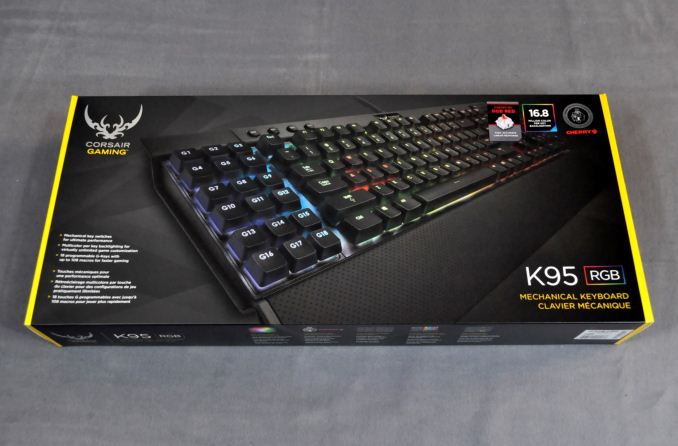
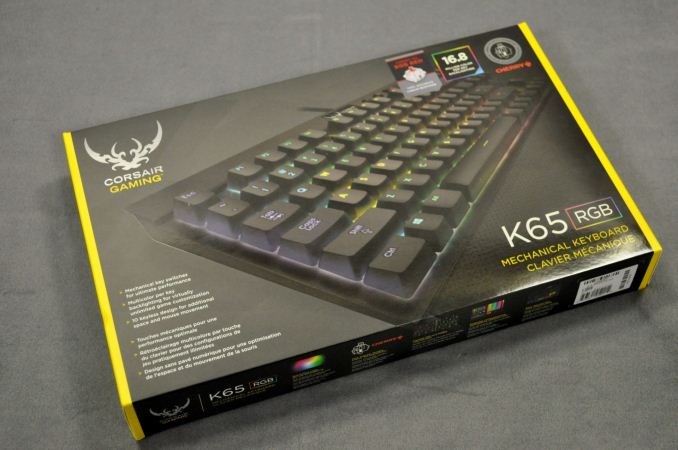

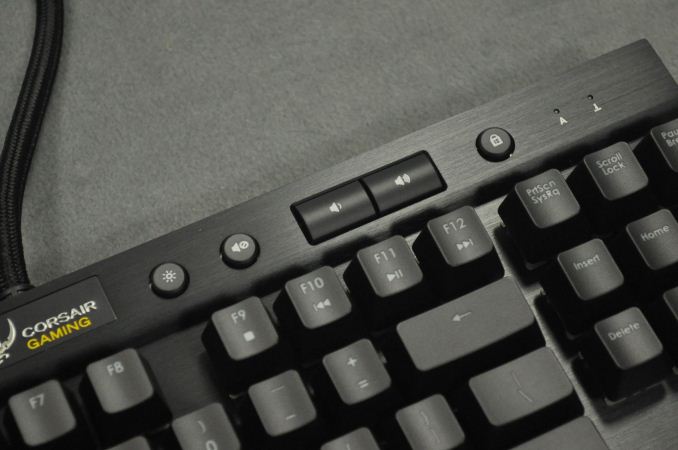







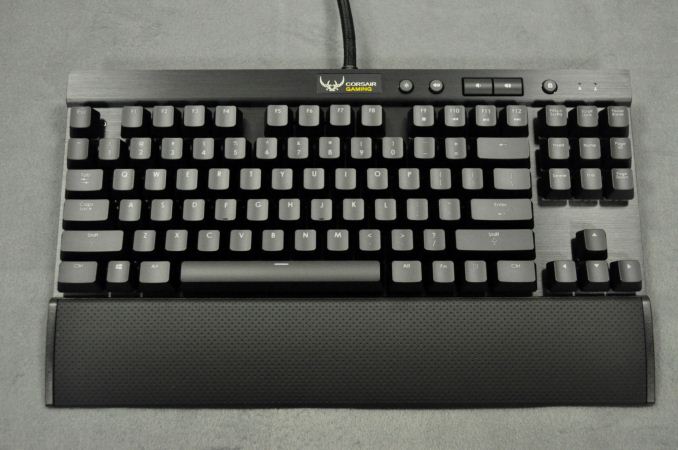
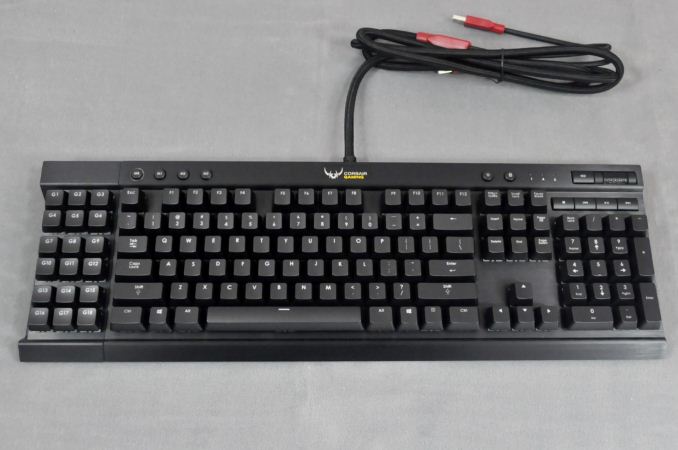
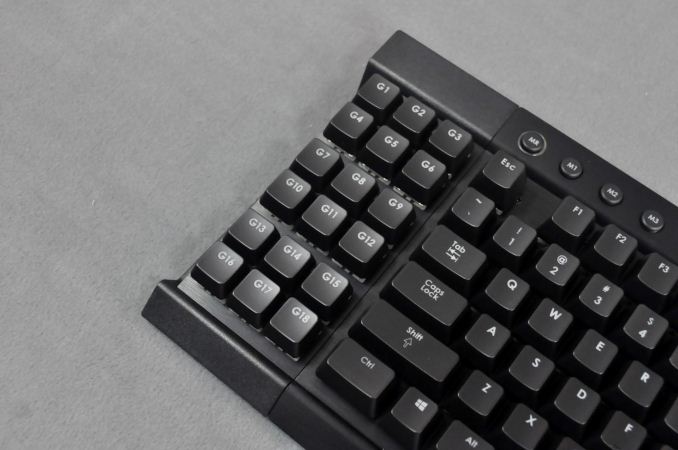
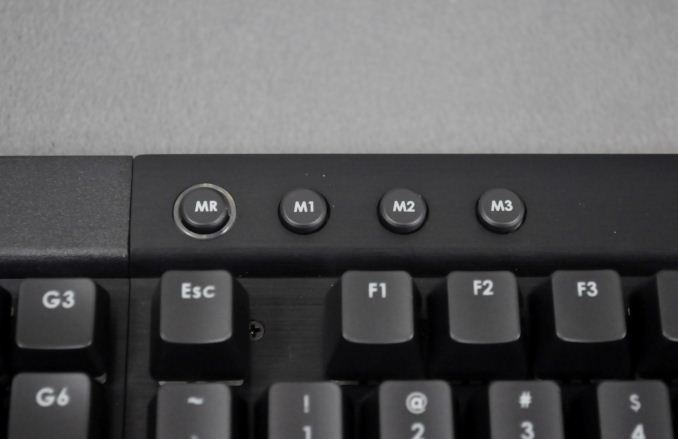
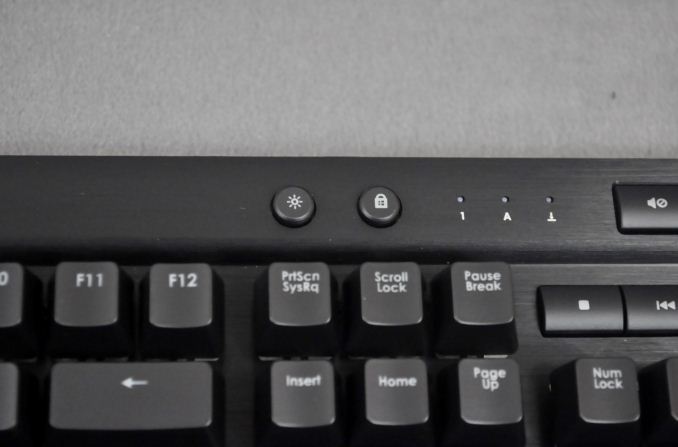
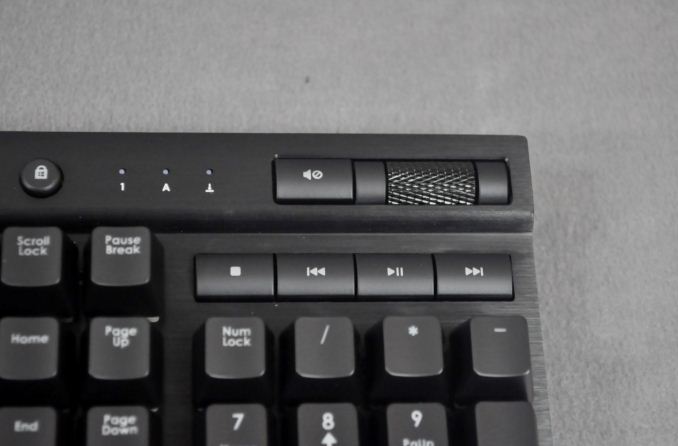
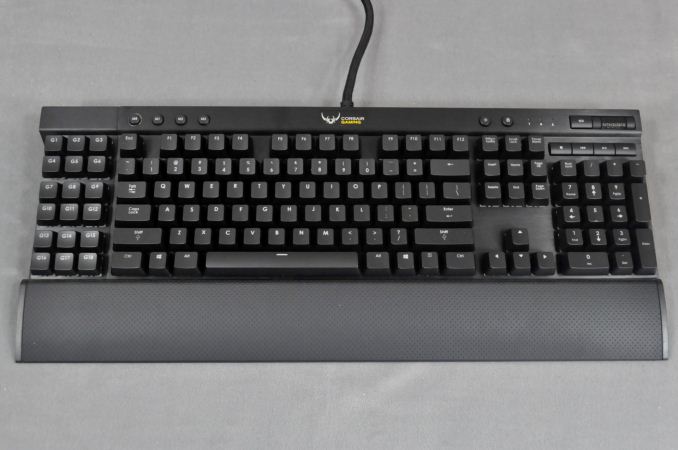






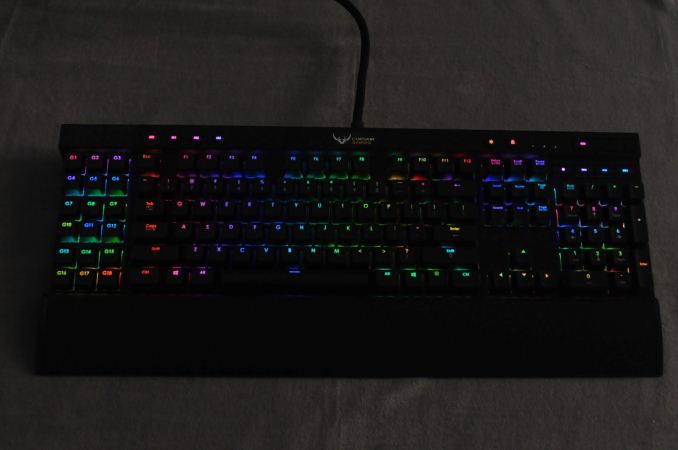








56 Comments
View All Comments
Dapper Gentleman - Friday, May 15, 2015 - link
If functionality is indeed evenly matched between products, there is no shame in basing your choice off aesthetics.And that logo does look like a tramp stamp.
DanNeely - Friday, May 15, 2015 - link
So does Razer's; but at least theirs goes mostly invisible if you turn the lighting off.close - Friday, May 15, 2015 - link
Razer's logo is basically the same stuff. Just with 3 branches instead of two. Oh, and also Razer's logo is slapped huge on the back of their laptops and lit up like a Christmas tree in puke green.http://nerdreactor.com/2014/09/24/corsair-criticiz...
So the hypocrisy is strong in some. They hate the "tramp stamp" but they love the "puke green manga-tentacle-fetish with fonts only a 13 year old would think is cool". I bought a Razer Blade because it's great device and still had to cover the logo as it looks unprofessional as hell in front of a client. But As long as the product is good and that logo doesn't affect my experience I think it's one of the more shallow things I've heard recently. "Not buying a good product because the logo sucks".
nmm - Saturday, May 16, 2015 - link
All of Corsair's products are made to be aesthetically pleasing. Premium parts are more expensive not just because of how they work, but because they are as beautiful as they are functional, so obviously how nice something looks is significant. Cases, fans, memory modules, close loop water coolers — if it doesn't look nice it won't sell as well. That's just how it is. I tend to agree. The stupid logo is a minus. I feel the way about Logitech's new "s" update to their gaming peripherals. The G700 mouse looks amazing. G700s? I would imagine the "s" stands for "stupid looking".meacupla - Thursday, May 14, 2015 - link
razer blackwidow tournament edition, worst keyboard ever.way too easy breaking the USB connector on the keyboard side.
close - Friday, May 15, 2015 - link
You know that you can twist the Razer logo a bit and it will look just the same. Also, you can tape a $100 bill over it to soothe the bleeding heart.Dorek - Friday, June 12, 2015 - link
Luckily I was able to buy a flag-logo M65 RGB from Corsair's site a couple months ago. I too hate the new logo.Aikouka - Thursday, May 14, 2015 - link
I used to own a Corsair K90, and about a year ago, I upgraded to a Corsair K95 (non-RGB). My biggest qualm with the keyboard is that I keep having issues with repeated key presses. My first thought was that maybe my keystroke was lasting a bit too long, but I don't have this problem with any other keyboard.One thing that I find to be an annoyance is the keyboard firmware upgrade process. Corsair requires you to download an installer, and that may not sound too bad by itself. The problem is that the installer installs a single program that only updates the keyboard to a specific firmware. In other words, you install it, update the keyboard, and then uninstall it. Why in the world do I even have to install it!? At least motherboard manufacturers have installed update software that can check for updates and perform the updates.
puppies - Friday, May 15, 2015 - link
Having the same problem with repeated key presses registering, annoying as hell and seems completely random. Did you fix it or am I taaking it back to the store (<---see did it again)Mkii - Thursday, May 14, 2015 - link
Not only the tremendous ugly non international focus logo (wonder if everybody have such uglys tattoos like the logo, in California), what happened with the Gun Metal colour for keyboards? Only black now? Come on! You are only 12 years old only once in your life....when you are 12 y/old.